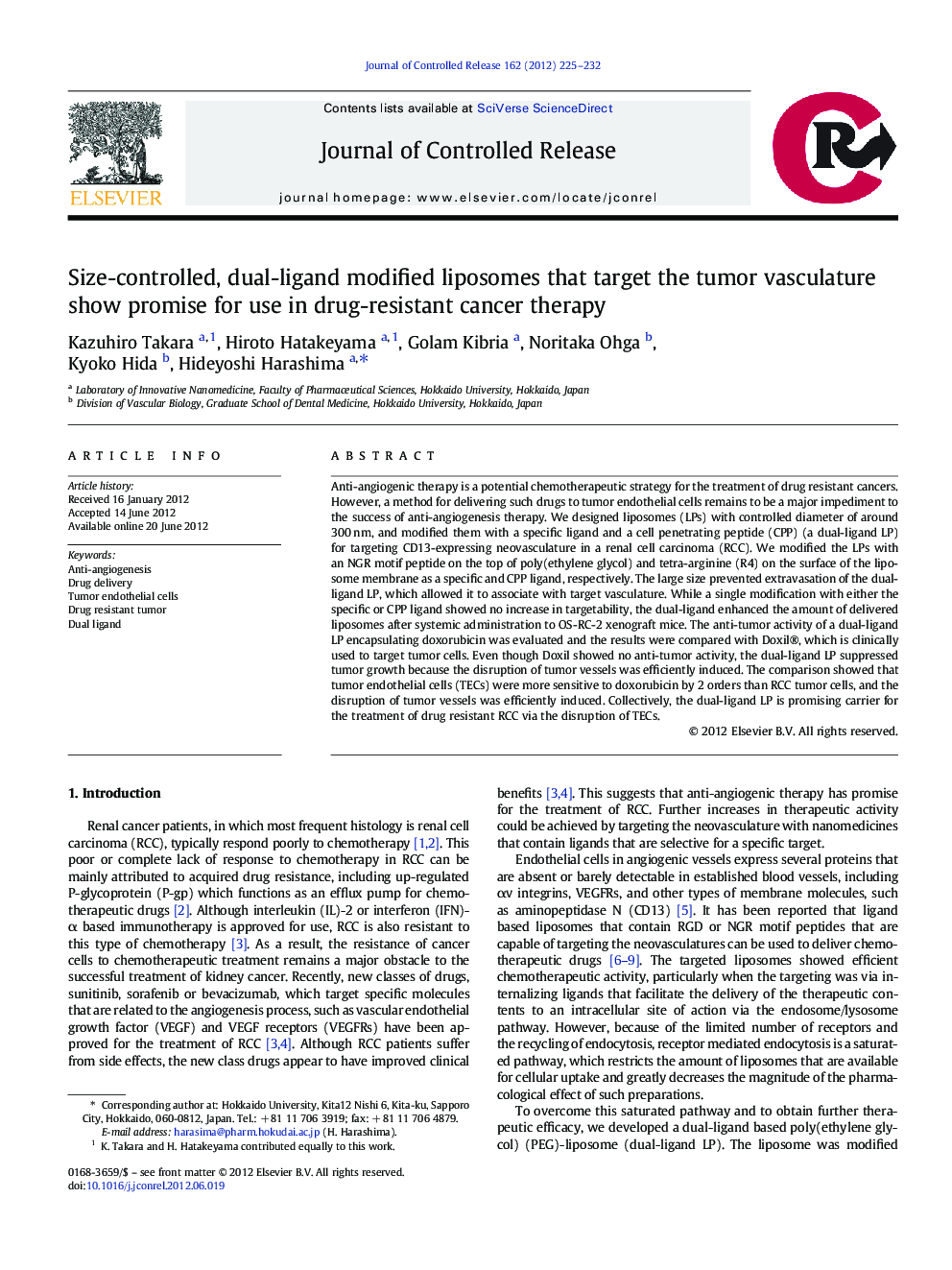| کد مقاله | کد نشریه | سال انتشار | مقاله انگلیسی | نسخه تمام متن |
|---|---|---|---|---|
| 1424583 | 986730 | 2012 | 8 صفحه PDF | دانلود رایگان |

Anti-angiogenic therapy is a potential chemotherapeutic strategy for the treatment of drug resistant cancers. However, a method for delivering such drugs to tumor endothelial cells remains to be a major impediment to the success of anti-angiogenesis therapy. We designed liposomes (LPs) with controlled diameter of around 300 nm, and modified them with a specific ligand and a cell penetrating peptide (CPP) (a dual-ligand LP) for targeting CD13-expressing neovasculature in a renal cell carcinoma (RCC). We modified the LPs with an NGR motif peptide on the top of poly(ethylene glycol) and tetra-arginine (R4) on the surface of the liposome membrane as a specific and CPP ligand, respectively. The large size prevented extravasation of the dual-ligand LP, which allowed it to associate with target vasculature. While a single modification with either the specific or CPP ligand showed no increase in targetability, the dual-ligand enhanced the amount of delivered liposomes after systemic administration to OS-RC-2 xenograft mice. The anti-tumor activity of a dual-ligand LP encapsulating doxorubicin was evaluated and the results were compared with Doxil®, which is clinically used to target tumor cells. Even though Doxil showed no anti-tumor activity, the dual-ligand LP suppressed tumor growth because the disruption of tumor vessels was efficiently induced. The comparison showed that tumor endothelial cells (TECs) were more sensitive to doxorubicin by 2 orders than RCC tumor cells, and the disruption of tumor vessels was efficiently induced. Collectively, the dual-ligand LP is promising carrier for the treatment of drug resistant RCC via the disruption of TECs.
Figure optionsDownload high-quality image (256 K)Download as PowerPoint slide
Journal: Journal of Controlled Release - Volume 162, Issue 1, 20 August 2012, Pages 225–232